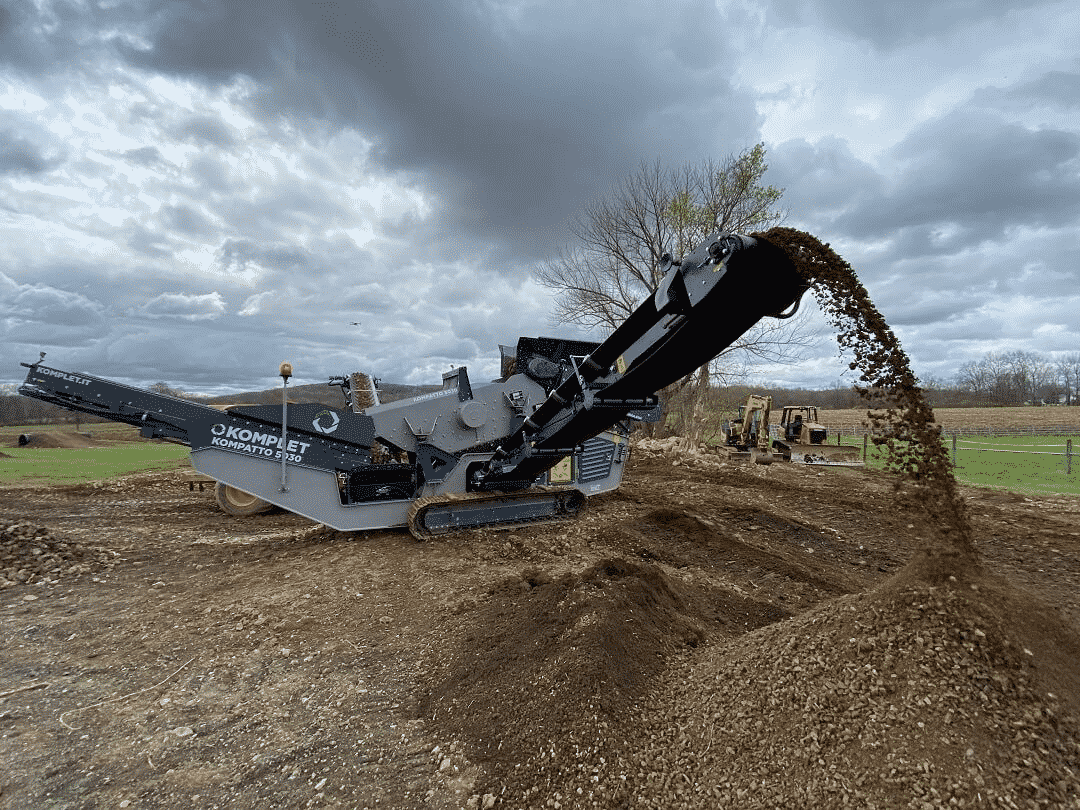
When you’re working on a construction project, landscaping job, or even a simple gardening task, having the right tools is critical to achieving the best results. One tool that is often overlooked but incredibly important is the dirt screen. A dirt screen helps you separate dirt, soil, and sand from unwanted debris like rocks, roots, and other materials, making it easier to get the quality soil you need for your work. With so many dirt screens for sale, selecting the right one can be challenging.
In this article, we’ll break down the key factors to consider when choosing the right dirt screen for your project, ensuring you make an informed decision that improves your efficiency and results.
What is a Dirt Screen?
A dirt screen, often referred to as a soil or topsoil screen, is a piece of equipment used to sift and filter dirt from unwanted materials like stones, sticks, and large debris. It allows you to produce clean, fine soil that is ideal for various uses, from large construction projects to small home gardening jobs.
Dirt screens come in various types and sizes, depending on their intended use. Whether you’re a professional contractor or a weekend gardener, choosing the right dirt screen will save you time, effort, and money in the long run.
Why Choosing the Right Dirt Screen Matters
The efficiency of your project largely depends on the equipment you use. Using the wrong dirt screen could lead to inefficiencies, time wastage, and even incomplete tasks, which can be costly and frustrating. Additionally, the type of soil produced can directly impact your project, whether you’re constructing a foundation, planting crops, or creating a landscape.
With a wide variety of dirt screens for sale, understanding the critical factors in selecting the right one is essential to completing your project smoothly and effectively.
Factors to Consider When Selecting a Dirt Screen
Choosing the right dirt screen depends on various factors that determine how well the equipment will perform for your specific needs. Below are some of the key elements to think about:
1. Size of the Screen
One of the most important things to consider when selecting a dirt screen is its size. The right size depends on the scope of your project:
- Small projects (like home gardening or backyard landscaping): A smaller dirt screen will be sufficient for smaller quantities of soil. Compact dirt screens are typically lightweight and easy to use for personal projects.
- Large projects (such as construction or commercial landscaping): For bigger jobs, you’ll need a large, heavy-duty screen that can process a significant amount of soil quickly. Larger screens are designed to handle tough jobs, including filtering out large rocks and debris.
2. Type of Material
The type of material the dirt screen is made from will affect its durability and suitability for your project. There are generally three common materials used for dirt screens:
- Steel screens: These are heavy-duty and designed for rough projects where rocks and other hard materials are present. They are durable and can last longer under tough conditions.
- Plastic screens: Ideal for light-duty tasks such as garden landscaping or home improvement projects. These screens are affordable, lightweight, and easy to move around.
- Wire mesh screens: These are versatile screens that work well for both small and large projects. Wire mesh screens offer a good balance of durability and flexibility, making them popular for a wide range of uses.
3. Mesh Size
The mesh size of the screen refers to how fine or coarse the dirt will be after being sifted. Depending on your project’s requirements, you may need a finer or coarser mesh.
- Fine mesh: If your project requires finely sifted soil (for example, in gardening or precision landscaping), a fine mesh screen will filter out small particles and produce high-quality soil.
- Coarse mesh: For projects where larger soil particles are acceptable (such as in construction or industrial work), a coarser mesh will allow medium-sized particles to pass through, while still filtering out large debris.
4. Portability
Depending on how mobile you need your dirt screen to be, you can choose between fixed or portable models.
- Fixed screens: These are stationary and often designed for continuous use in a single location. They are perfect for large, ongoing projects where moving the equipment isn’t necessary.
- Portable screens: If you’re working on different job sites or need to move the screen around frequently, a portable dirt screen is the better choice. These models are typically lighter and come with wheels or can be easily disassembled for transport.
5. Cost
Another important consideration when purchasing a dirt screen is cost. Dirt screens come in a wide range of prices depending on their size, material, and features.
- Basic models: These are typically more affordable and suitable for small projects. Basic dirt screens are generally manually operated and may not have as many features but are perfect for occasional use.
- Advanced models: Higher-end dirt screens often come with additional features like vibrating mechanisms or automated processes. These are more expensive but are ideal for large-scale or professional projects where speed and efficiency are a priority.
6. Ease of Maintenance
Maintenance is an important factor, especially if you’re planning to use your dirt screen frequently. Consider the type of dirt screen that is easy to clean and maintain.
- Low-maintenance screens: For smaller projects, simple designs may only require occasional cleaning and minimal upkeep.
- Higher-maintenance screens: Heavy-duty or motorized dirt screens may require more attention, such as regular oiling, part replacement, and cleaning to ensure longevity.
Common Types of Dirt Screens
There are different types of dirt screens available, each serving different purposes. Below are the most common ones:
1. Manual Dirt Screens
These screens are operated by hand and are generally smaller. They are perfect for homeowners who need a low-cost solution for their gardening or small landscaping projects.
- Pros: Inexpensive, easy to use, and portable.
- Cons: Slower and requires more physical effort.
2. Vibrating Dirt Screens
These screens use a motor to shake the soil and sift it through the mesh. Vibrating dirt screens are perfect for larger projects that require faster processing.
- Pros: Efficient, reduces manual labor, and suitable for large amounts of soil.
- Cons: More expensive and requires power.
3. Rotary Drum Screens
Rotary drum screens are commonly used in industrial projects. They rotate as dirt is fed into them, filtering out debris as the drum turns.
- Pros: Can handle large volumes of soil and debris.
- Cons: Bulky, expensive, and mostly used for commercial purposes.
Conclusion
Selecting the right dirt screen can make a significant difference in the success of your project. Whether you’re a professional contractor or a homeowner, understanding your needs and the features of the different dirt screens for sale will help you make an informed choice. By considering factors such as size, material, mesh size, portability, cost, and maintenance, you can ensure that you pick the perfect dirt screen for your specific requirements.
In the end, the right dirt screen will save you time, money, and effort, making your project smoother and more efficient. So take the time to choose wisely and invest in a screen that will meet your needs for years to come.






